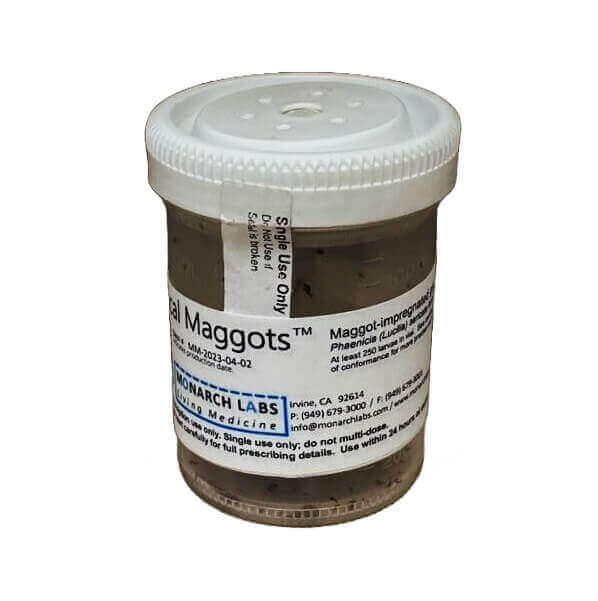Articles on Constructing Custom Maggot Therapy Dressings
The articles listed below describe, in detail, how to construct your own Maggot Therapy dressing. Custom dressings are particularly useful for unusually large wounds, or wounds in complicated anatomical locations. Contact Monarch Labs if you can not find these articles.
Sherman RA. “A new dressing design for use with maggot therapy.” Plast Reconstr Surg. 1997 Aug;100(2):451-6. PMID: 9252615
Sherman RA, Tran JM, Sullivan R. “Maggot therapy for venous stasis ulcers.” Arch Dermatol. 1996 Mar;132(3):254-6. PMID: 8607628
If you can’t find these articles or need further assistance, feel free to contact Monarch Labs. For a pictorial guide to maggot dressings in horses and other non-human animals, visit our Equine Dressings page.

